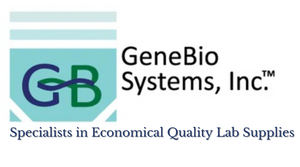
Size:100ug. Other sizes are also available. Please contact us.
Research Areas:Cancer
Uniprot NO.:P06804
Uniprot Entry Name:TNFA_MOUSE
Gene Names:Tnf,Tnfa,Tnfsf2
Species:Mus musculus (Mouse)
Source:E.Coli
Expression Region:80-235aa
Sequence:M+LRSSSQNSS DKPVAHVVAN HQVEEQLEWL SQRANALLAN GMDLKDNQLV VPADGLYLVY SQVLFKGQGC PDYVLLTHTV SRFAISYQEK VNLLSAVKSP CPKDTPEGAE LKPWYEPIYL GGVFQLEKGD QLSAEVNLPK YLDFAESGQV YFGVIAL
Protein Description:Partial
Tag Info:Tag-Free
Mol. Weight:17.4 kDa
Biological_Activity:Fully biologically active when compared to standard. The ED50 as determined by a cytotoxicity assay using murine L929 cells is less than 0.1 ng/ml, corresponding to a specific activity of ? 1.0 × 107 IU/mg in the presence of actinomycin D.
Purity:>98% as determined by SDS-PAGE and HPLC.
Endotoxin:Less than 1.0 EU/µg as determined by LAL method.
Form:Lyophilized powder
Buffer:Lyophilized from a 0.2 µm filtered PBS, pH 7.2
Reconstitution:We recommend that this vial be briefly centrifuged prior to opening to bring the contents to the bottom. Please reconstitute protein in deionized sterile water to a concentration of 0.1-1.0 mg/mL.We recommend to add 5-50% of glycerol (final concentration) and aliquot for long-term storage at -20?/-80?. Our default final concentration of glycerol is 50%. Customers could use it as reference.
Notes:Repeated freezing and thawing is not recommended. Store working aliquots at 4? for up to one week.
Alternative Name/ Alias:Cachectin, Tumor necrosis factor ligand superfamily member 2, TNF-a, , NTF
Relevance:Cytokine that binds to TNFRSF1A/TNFR1 and TNFRSF1B/TNFBR. It is mainly secreted by macrophages and can induce cell death of certain tumor cell lines. It is potent pyrogen causing fever by direct action or by stimulation of interleukin-1 secretion and is implicated in the induction of cachexia, Under certain conditions it can stimulate cell proliferation and induce cell differentiation.; The TNF intracellular domain (ICD) form induces IL12 production in dendritic cells. {ECO:0000250}.
PubMed ID:2836146; 3898078; 2419912; 2989794; 3040015; 3684584; 7560085; 9089109; 14656967; 2777790; 2268312; 3349526; 10089307
Function:Cytokine that binds to TNFRSF1A/TNFR1 and TNFRSF1B/TNFBR. It is mainly secreted by macrophages and can induce cell death of certain tumor cell lines. It is potent pyrogen causing fever by direct action or by stimulation of interleukin-1 secretion and is implicated in the induction of cachexia, Under certain conditions it can stimulate cell proliferation and induce cell differentiation.; FUNCTION
Involvement in disease:
Subcellular Location:Cell membrane, Single-pass type II membrane protein, SUBCELLULAR LOCATION: Tumor necrosis factor, membrane form: Membrane, Single-pass type II membrane protein, SUBCELLULAR LOCATION: Tumor necrosis factor, soluble form: Secreted, SUBCELLULAR LOCATION: C-domain 1: Secreted, SUBCELLULAR LOCATION: C-domain 2: Secreted
Protein Families:Tumor necrosis factor family
Tissue Specificity:
Paythway:
HGNC Database Link:
UniGene Database Link:https://www.ncbi.nlm.nih.gov/UniGene/clust.cgi?ORG=Mm&CID=1293
KEGG Database Link:https://www.genome.jp/dbget-bin/www_bget?mmu:21926
STRING Database Link:https://string-db.org/network/10090.ENSMUSP00000025263
OMIM Database Link:
